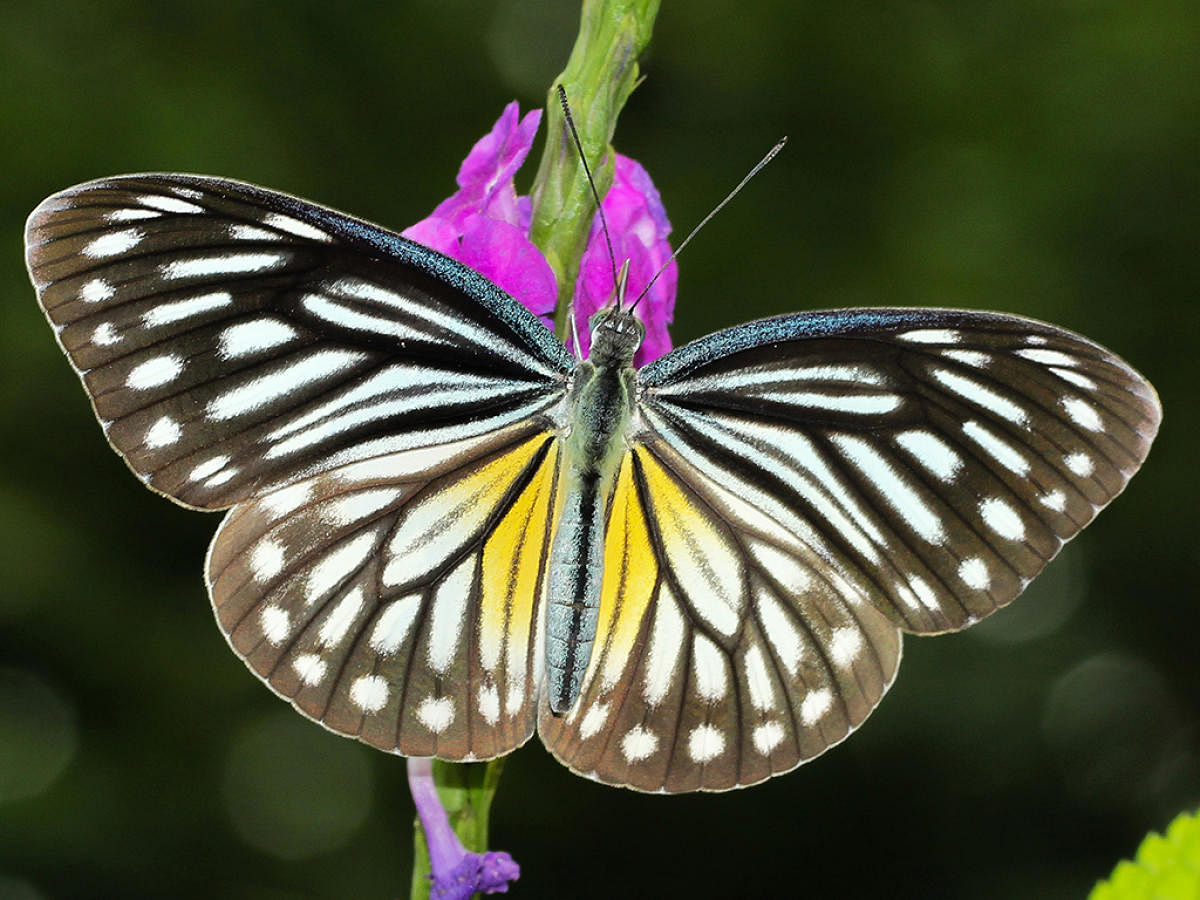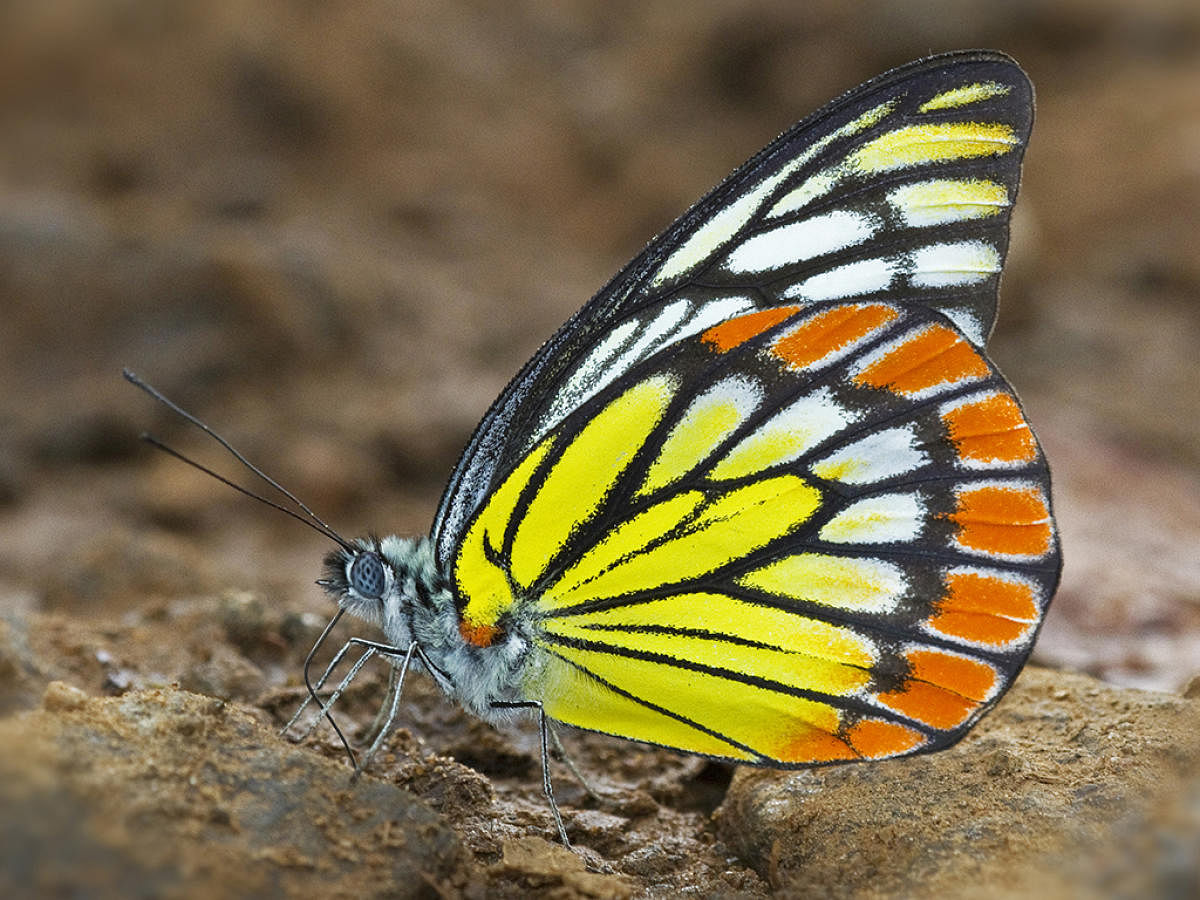
Looks are deceptive. This age-old adage comes true in some butterfly colonies where the winged insects have acquired bright colours and attractive wing patterns over millions of years to fool their predators. Many of them also modified their flight patterns as an additional escape route.
How did they learn to do so? Did both traits develop simultaneously? Scientists at the National Centre for Biological Science (NCBS), Bengaluru now provide answers to such queries as they uncover the secrets of a long evolutionary game through which butterflies warn, fool and escape their predators.
The NCBS team has demonstrated how an intense evolutionary pressure armed butterflies with the fine trait of subterfuge because of which they pick up easy-to-recognise features like attractive colours and prominent wing designs from their cousins much faster than flight modifications.
Butterflies deal with predators ranging from birds and lizards and frogs to spiders and praying mantis, all of which hunt visually. Most of the victims evade the attackers by flying away before the predators strike. Such butterflies are always on watch. But a small section found a useful second alternative—they made themselves unpalatable to the enemy.
Art of mimicking
Species that are palatable to predators can sometimes evolve to resemble chemically well-defended or otherwise unpalatable species, thus fooling predators and gaining a survival advantage. This anti-predator adaptation is known as mimicry, and it has evolved multiple times across animal lineages and communities.
There are two distinct types of such mimicry—when two or more unpalatable species resemble each other (known as Müllerian mimicry) and when there is an evolved resemblance between a palatable species (the Batesian mimic) and an unpalatable species. Often they co-exist to form a community.
Butterflies evolved on the earth around 80-85 million years ago. About 60 million years ago, some Asian butterfly species began feeding on toxic host plants during the caterpillar stage and became unpalatable to many of their predators, who learnt to avoid preying on these species. The toxicity in the butterflies’ bodies was not too high to kill the predators because in such a case, the attackers will never learn.
Such species were also aposematic—they advertised their unpalatability with bright, conspicuous wing colours and patterns. Before long, some palatable butterflies followed suit and evolved into Batesian mimics that closely resembled the aposematic models.
"Evolution of the mimics happened in the last 10-15 million years under intense selection pressure,” NCBS scientist Krushnamegh Kunte who led the study told DH. “Toxicity in butterflies is almost as old as the species is, but mimicry happened much later.”
In the last five years, two of Kunte’s PhD students, Dipendra Nath Basu and Vaishali Bhaumik, travelled across the Western Ghats from Maharashtra to Kerala looking for such mimics. Navigating dense vegetation they found 26 butterfly species comprising several mimetic communities.
The researchers measured traits related to flight (such as body proportions and wing shape) and wing colour patterns in these butterflies to estimate the evolutionary history of the mimetic traits. Specifically, they measured the rate of evolution of each trait and the amount of convergence in traits between mimics and models, about the traits of the non-mimetic sister species of the Batesian mimics.
Finding the rate of evolution
"What we found is that colour patterns evolved much faster than flight morphology as genes underlying the colour patterns were the first ones that got changed. Also, the members of mimetic communities had evolved at a faster rate than their close relatives,” said Basu.
Butterflies exhibit a wide range of colours and colour patterns, suggesting that the underlying genetic architecture behind wing patterns and colour pigments is relatively malleable and susceptible to change. In contrast, a sustained flight is a more specialised form of locomotion that requires fine-tuned morphology and movement. Even slight changes in body proportions or wing shape can have drastic effects on the flight ability of insects. Despite their large wings, butterflies are no exception to these constraints.
"Globally, a majority of the butterfly species are non-mimetic. In the Western Ghats, there are 337 butterfly species, of which 27 belong to that class. That’s about 8-10%," Kunte said.
The findings on decoupled evolution of two key traits (flight morphology and colour patterns) of defended and mimetic prey species, shed light on the rate of trait evolution that help butterflies escape their predators. “Our results provide insights into the assembly of biological communities, demonstrating that the evolution of complex, multi-trait mimetic phenotypes depends more on different rates of trait divergence rather than on phylogenetic relatedness,” the team reported in the prestigious Proceedings of the National Academy of Sciences earlier this week.
Taking the research forward, the researchers have begun to examine if the rate of trait evolution is similar in the Western Ghats as against large, old communities in North East India, South East Asia and the neo-tropics. They are searching for evidence in support of their theory, hoping that such a study would reveal how biodiversity flourished in the Indian tropics, creating one of the most striking adaptive radiations on earth.

